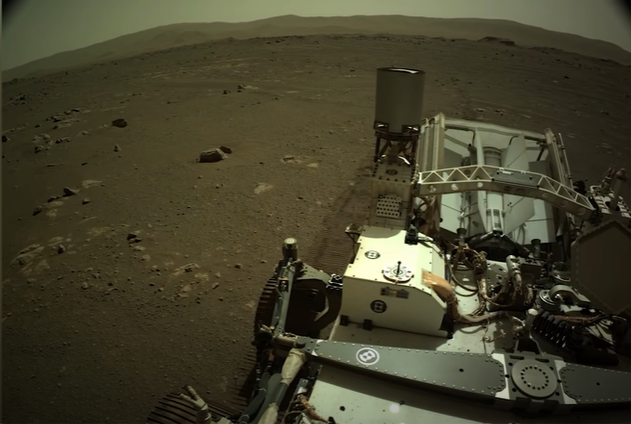
NASA's Perseverance rover has successfully landed on the Red Planet and is now driving around to get a glimpse of what the environment is like. Apparently, the rover is making quite a racket while driving.
NASA has released an audio recording of Perseverance's 90-foot drive-in Jezero Crater on Mar. 7, which was captured by its entry, descent, and landing or EDL microphone.
NASA releases audio of Perseverance
Through the recorded audio, the rover wheels can be heard crunching over the surface of Mars as it continues with its mission, along with the creaks and bangs made by its mobility system.
According to Vandi Verma, the senior engineer and rover driver at NASA's Jet Propulsion Laboratory, a lot of people do not appreciate that the wheels are metal, even after seeing the pictures. When driving with metal wheels on rocks, it is very noisy.
Also Read: NASA Perseverance 2020: Mars Sample Return Mission Would Bring Rocks with New Capsule Tech
In fact, the drive is so noisy that the lead engineer for the EDL system, Dave Gruel, said that he would pull over and call for a tow if he ever heard these sounds while driving his car.
The original and unfiltered 16-minute recording contains a high-pitched scratching noise together with the sounds of the rover's driving.
While NASA's Perseverance engineering team is still figuring out where the high-pitched scratching came from, they are already looking at a couple of possibilities.
The mobility system could have made the rover's sounds, or it could have come from the electromagnetic interference from one of Perseverance's electronics boxes.
With that said, NASA has also released a 90-second version of the audio that filters out some of the noise. The space agency posted the second version on NASA's official Twitter account.
The Perseverance rover has been giving the public the first-ever sounds recorded on Mars. Aside from the audio, another microphone that is part of its SuperCam instrument also recorded winds and the sound of the instrument's laser zapping rock on Mars.
Verma stated that the variations between Earth and Mars are already visually represented. However, the sound is a different take, as it showcases more differences between the two planets, and it lets people experience that environment of the Red Planet more closely.
NASA's Mars mission
The Mars 2020 Perseverance Rover mission is part of NASA's overall Mars Exploration Program. It is a long-term effort of robotic exploration on Mars.
According to NASA, the mission addresses the high-priority science goals for Mars exploration, including key questions about the potential for life on Mars.
The rover takes the next step by seeking signs of habitable conditions on the Red Planet in the past and searching for signs of past microbial life itself.
Perseverance introduces a drill that can collect core samples of the most promising rocks and soils and set them aside in a cache on the surface of the Red Planet.
A mission in the near future could return the gathered samples to Earth, and that would help scientists study them in laboratories with special room-sized equipment that would be too massive to take to Mars.
The Mars mission also gives opportunities to gather knowledge and demonstrate technologies that address future human expeditions' challenges to the Red Planet. These include testing methods for producing oxygen from the atmosphere on Mars and identifying other resources.
This article is owned by Tech Times
Written by Sieeka Khan
ⓒ 2025 TECHTIMES.com All rights reserved. Do not reproduce without permission.




